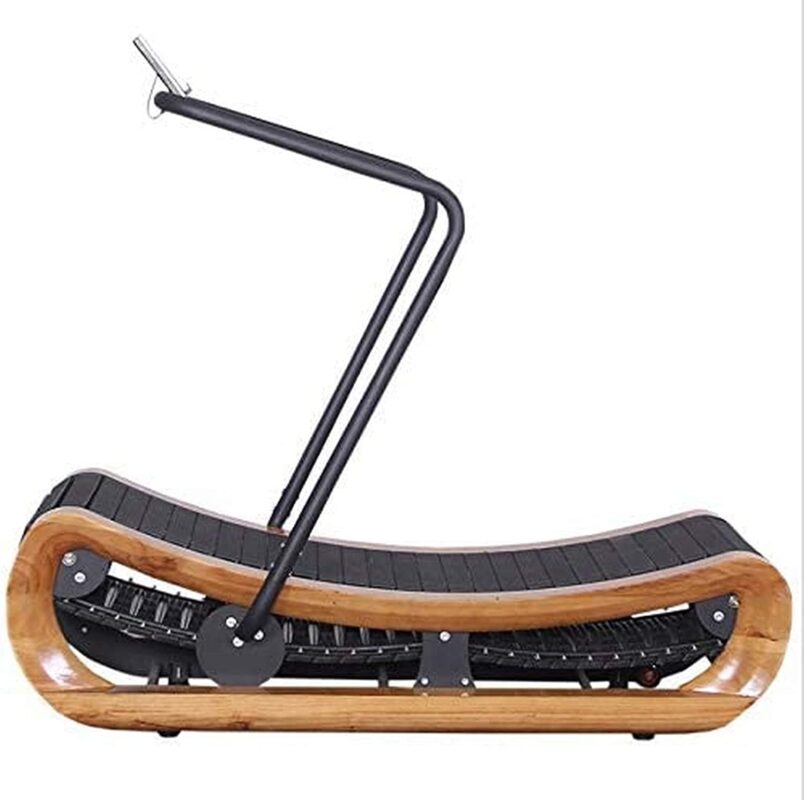
Every new year starts with a list of resolutions that we aim to achieve by the year’s end. Weight loss and a healthier body are popular choices amongst adult goals. However, it isn’t rare to see the plans uncompleted due to various reasons or excuses. The beginning of 2022 can be a game-changer for your body, and you can achieve an improved body with the right decisions.
Treadmill running is an effective exercise for weight loss and strength training. Regular treadmill users enjoy excellent benefits from its use and are a step ahead in accomplishing their fitness goals. Are you aiming to set up your home gym this year? If yes, it’s essential to have a clear idea of the costs involved.
An average motorised treadmill would cost about £1000 and last for more than five years if used properly. Hence, the hefty one-time payment isn’t a costly decision as the cost is spread over a long time. However, the purchase price isn’t the only cost involved with treadmill usage. A motorised treadmill requires electricity to run, and with hiking energy prices, a user can expect an addition to their monthly electricity bill.
Contents
How much electricity would be used by a treadmill?
It is a common question amongst trainers setting up their home gym. They are concerned about whether the monthly cost of running a treadmill will outweigh its benefits. The power consumption of a treadmill is dependent on about five factors; some of them create a significant difference in the overall energy costs while the others would barely have a noticeable impact.
However, the treadmill’s electricity costs aren’t as gigantic as some users perceive.
According to an estimate, a motorised treadmill that runs at an average speed of 7 mph for 18 hours over one month will use up to 10.6 kilowatt hour.
According to the BEIS, (the Department for Business, Energy and Industrial Strategy), the average cost of 1 kWh is around 16p in the UK, so, for our estimate, the electricity costs would be less than £2 in total.
To put that in perspective, a big mac by McDonald’s costs about £3.19.
Nevertheless, the costs can vary depending on the age of the treadmill, the size of its motor, and internal wiring. And if care isn’t taken, the electricity consumption may rise to a more discernible figure. Fortunately, you won’t have to look any further to learn more about treadmill power consumption in better detail.
In this blog, we are going to talk about multiple factors that determine the energy consumption of your treadmill and how you can save more on your electric bill without giving up on a healthy lifestyle.
Let’s go!
The Wattage Rating
It is probably the most crucial factor that determines the power consumption of your treadmill. Electric treadmills are powered by treadmill motors that consume electricity and determine the belt’s pace. Every motor is different and varies in power rating and heavy-duty rating. The value of these ratings defines the overall wattage rating of your treadmill.
A standard treadmill is equipped with an electric motor with a wattage rating between 300-900. Some high-performance treadmills come with a higher energy consumption rating of about 1200 watts. The wattage rating of your treadmill determines the maximum power that it can exert to run the belt. Some treadmills don’t come with an explicit wattage rating. Instead, the motors are enlisted with a horsepower rating.
You can easily convert horsepower to KWH. Average users would usually buy a treadmill of about two hp, which translates into 1492 watts-hour or 1.492 kWh. You can convert your horsepower rating to KWH by multiplying the horsepower figure by 746.
Precisely, Treadmill motors with a low wattage rating would consume less energy in an hour. If you are a regular user that doesn’t practice high-intensity intervals regularly, you should go with a treadmill motor with a wattage rating between 1400 to 2000 watts. Avoid buying a treadmill with a low wattage rating as the treadmill motor would heat up quickly that may cause problems later on.
Daily Usage
Now, it is the simplest factor to understand. A Treadmill uses electricity for the time it is in use. The more time you use it, the greater the power consumption. However, running a treadmill constantly uses less electricity than if you were to shorten the usage spans. It is mainly because it would require less effort to rotate the belt once the treadmill motor is heated.
On the other hand, short spans mean that the treadmill motor requires more electricity to restart each time. Hence the electrical charges for treadmill use would be higher.
The question still remains ‘How much electricity does a treadmill consume?’. The timing of its usage would play a fair role in the overall cost; however, the overall impact is dependent on the intensity and regularity of the use.

Running speed
The Motorised treadmill belt is powered by the electrical motor that receives electricity and produces the desired torque to turn the track. Once you set up a high speed, the treadmill consumes more electricity to fulfil your higher intensity needs.
If you regularly use the treadmill at high speeds, the cost is going to be higher. However, you can reduce the costs by getting a treadmill that supports a high pace. A lower-rated treadmill motor heats up quickly, increasing the resistance to current flow that increases the energy consumption.
Buying a higher capacity motor would allow you to run at higher speeds in longer intervals without heating the motor, thus, reducing the overall consumption. You can also cut on your utility bill by giving the machine a warm-up time before taking it at high speeds.
Track Incline
Motorised treadmills require power from the motor to elevate the track. Once you are using the treadmill at a higher incline, the motor has to do additional work, resulting in greater power consumption.
However, the impact of setting a higher incline is barely noticeable until you are using a high incline and high pace simultaneously for longer intervals. You can improve the energy consumption during treadmill use by setting a steady incline for high speeds; hence, it won’t put a massive strain on the motor.





Age of treadmill
Electric treadmills suffer higher wear and tear than manual treadmills, mainly because the latest treadmills have multiple electrical components that come with a finite life. The electrical component becomes obsolete as the machine gets old, and its internal resistance increases.
Older components require greater electricity to function correctly. Hence, it would cause your electricity bills to rise. To save money, you should replace the older parts of your machine timely.
On the other hand, you can try to maintain and lubricate the components timely, which would help in improving their efficiency period.
Conclusion
We have finally come to the end of the blog; I hope it has cleared any doubts in your mind regarding the electricity consumption of a treadmill. Finding the right workout equipment is crucial for setting up a good home gym. You must ensure that all your equipment, including the electrical appliances, are long-lasting and incur low costs in the long run.
The energy consumption of a treadmill depends on the factors mentioned above, and if you keep the tips in mind, reducing the total cost of electricity won’t be a tough deal. The new year is an excellent time to set up new goals and direct your body to pursue a healthier lifestyle.
For more great articles with advice and help, please take a look here.
Other electricity saving options
Whilst on the subject of saving money on your electricity, here are some top tips that may also help:
1. Do full laundry loads
This tip seems easy enough, but many people do not think about it. Washing a full load of laundry can save you quite a bit on your electric bill. The average washing machine uses approximately 30-40 gallons of water per cycle. When you wash smaller loads, you are using the same amount of water but for fewer clothes. This wastes water and energy.
2. Use the economy setting wherever possible
When using any appliance, always use the economy or lowest possible setting. This goes for everything from your washing machine and dishwasher to your oven, fridge, television and computer.
3. Don’t use standby modes
Appliances in standby mode are still using electricity, even though they are not turned on. It is important to unplug any appliances that you are not using or that are not essential.
4. Be careful filling that kettle
Only fill your kettle with as much water as you need. Boiling more water than you will use is a waste of energy and money.
5. Switch to LED bulbs (top tip)
By switching to LED bulbs, you can save up to £35 a year on your electricity bill. Not only do they use less energy, but they also last up to 25 times longer than traditional light bulbs.
If everyone in the UK made this switch, we could collectively save enough money to power nearly half a million homes for a whole year!
Traditional bulbs are extremely inefficient. LEDs are the polar opposite; they’re also more efficient and less wasteful.
Replacing traditional light bulbs with smart LED versions, such as Hive Lights, can help you save even more energy because you may turn them on and off remotely.
6. Use your microwave
Microwaves use less energy than conventional ovens. So, if you can cook your food in the microwave instead of the oven, you will save money on your electric bill.
7. Unplug your chargers
When your devices are fully charged, unplug the chargers from the sockets. Leaving them plugged in uses electricity even when your devices are not attached to them. With Hive Plugs, you can quickly and easily turn off your appliances at the wall with just a tap of the app – no more bending over or stretching to reach behind furniture!
8. Close your curtains at night
During winter, closing your curtains at night can help to keep the heat in. This will reduce your reliance on heating and could save you money on your electric bill.
9. Turn down the heating
During winter, it can be tempting to crank up the heating to keep yourself warm. But this uses a lot of electricity and can be expensive. Instead, try wearing layers of clothing or using a blanket.
In summer, open your curtains during the day to let natural sunlight in. This will help to keep your home cooler and reduce the need for artificial lighting and heating.
10. Consider a new boiler
If your boiler is more than 15 years old, it could be time for an upgrade. Newer boilers are much more energy-efficient and could save you up to £315 a year on your energy bill.
FAQs
Does a manual treadmill require electricity?
Manual treadmills are powered by a dynamo which generates power once you exert force on the track. Traditionally, non-motorised treadmills don’t require electrical input.
How much electricity does one hour of treadmill require?
As discussed above, energy consumption is dependent on multiple factors. An average treadmill running at a moderate pace would use up to 0.7 KWH in an hour, which translates to less than 15p.
Is a treadmill worth spending £1000?
A treadmill usually requires a significant financial investment. No one would want to get their decision wrong, and it’s essential to understand what your goals are. If you are looking for weight loss, treadmills and elliptical trainers are the two no-brainers. However, if your goal is to build muscles, you may have to think a little more about your goals and decision.